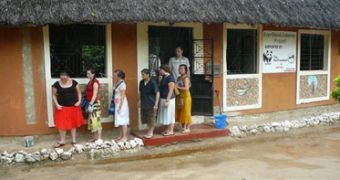Preserving one of the most biodiverse ecosystems in Kenya has paid off, leading to the birth of a one-of-a-kind village banks. The inhabitants realized that they have been blessed with an area with a lot of potential.
The Kaya Kinondo forest of Kwale, Kenya is the overwhelmingly rich habitat of several rare species of plants and animals.
Local authorities decided to explore its potential by transforming it into an ecotourism hotspot. After their efforts paid off and money started flooding the community, they figured that the best way to preserve their resources is to open a village bank.
Kaya Kinondo Financial Services Association has no ATMs, but it allows its customers to deposit or withdraw money, just like any other facility of this kind.
According to the local individuals, the bank's success is correlated with the economical potential of their forest, which was saved in time from damaging operation usually performed by villagers to increase their own profit, like deforestation or charcoal manufacturing.
The ecoturism project launched in 2003 had unexpected results. After showcasing their lifestyle and the natural beauties of this area, the authorities succeeded in raising a significant amount of money, but they didn't know where to invest it in a proper manner.
WWF decided to help them reach the right eco-friendly conclusion so it suggested that the community should open a bank which would provide efficient financial services while employing and re-educating most of the people who earned their living by making charcoal or cutting trees.
WWF provided special training so that the bank could become an efficient, profitable institution. In 2005 the village bank gave loans of up to $50 to their clients, but things have significantly improved and, by the end of this year, the facility succeeded in lending up to $60,000 to 130 clients who needed the money.
Most of the people didn't think the bank would make it, and others hesitated in depositing their money, probably thinking it would die sooner or later, due to mismanagement.
The entire eco-project started when 153 people agreed to buy shares for $3 each. This turned out to be quite an investment since, in 2003, 153 members had a net worth of $3,000 and now, as we speak, 689 members display a net worth of approximately $100,000.
The entire business followed a profitable path, proving that, in most of the cases, the respect towards the environment pays off.

 14 DAY TRIAL //
14 DAY TRIAL //